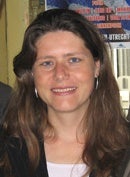 THURSDAY, May 4, 2017
THURSDAY, May 4, 2017
Building 2, Room 426 (Biostat Conference Room)
12:30-1:30 PM
Snacks will be provided!
Judith Lok, PhD
Associate Professor
Department of Biostatistics
Harvard T.H. Chan School of Public Health
Coarse Structural Nested Mean Models with application to initiating ART in HIV-positive patients
Longitudinal studies often suffer from time-dependent confounding. For example, in the context of a medical study, patient characteristics may affect the choice of treatment, which in turn may have an effect on the characteristics of the patients in future periods, which may then again affect the choice of treatment. It is well-known that, in the presence of time-dependent confounding, the time-dependent Cox model does not consistently estimate treatment effects. In longitudinal studies with time-dependent confounding, coarse Structural Nested Mean Models (SNMMs) produce consistent estimators of treatment effects. Coarse SNMMs specify how the effect of more than one consecutive dose of treatment depends on pre-treatment patient characteristics. However, coarse SNMMs lead to a large class of possible estimators, with estimates and standard errors that may differ considerably within this class. In this presentation, I will show that, under certain assumptions, there exists an explicit solution for the optimal estimator within the class of coarse SNMMs. Moreover, I will show that this estimator is doubly-robust. That is, the optimal coarse SNMM estimator is consistent and asymptotically normal if the model for treatment initiation is well-specified, or if a certain outcome-regression model is well-specified. In a simulation study, I compare the optimal estimator to some naive choices within the class of coarse SNMMs. In addition, I apply coarse SNMMs to study how the CD4 count increase due to one year of antiretroviral treatment (ART) depends on the time between HIV-infection and ART initiation in recently infected HIV-positive patients. Both in the simulation study and in the application, the use of optimal estimators leads to substantial increases in precision. In addition, I will briefly present joint work on coarse SNMMs with Shu Yang (North Carolina State University), where we develop and apply doubly robust goodness-of-fit tests of the treatment effect model and a sensitivity analysis of the assumption of no unmeasured confounding.



